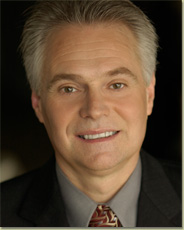Dirty Little Secrets: Why sellers can’t sell and buyers can’t buy, and what you can do about it. Sharon Drew Morgen

- Image of Sharon Drew Morgen
Dirty Little Secrets: Why sellers can’t sell and buyers can’t buy, and what you can do about it. Sharon Drew Morgen. 2009. 978-0964355392. I am a Sharon Drew fan. She has taken up the gauntlet this time of showing the gap between what sellers are trying to do and what buyers are trying to achieve. Just let buyers be smart about what they want to do! She leads the field in giving you,the vendor, insights into what really goes on inside the prospect company and what you need to do up front to dramatically improve your chances of selling more successfully, regardless of what the marketplace is doing. She clearly points out that the present increased difficulties in selling are just a manifestation of all that sales has been doing wrong for years.
This is not a business as usual with a few tweaks book. She is asking sales folks to make a dramatic change in how they approach clients and how they think about selling. If you are not a very secure salesperson, you will balk at this approach. Once again, unless you read this, you won’t know what you do not know. Yet all the research on sales and marketing we have done confirms out that Sharon Drew is in the forefront, pointing out what really must be done to move selling from its dismal yet commonly accepted closing rates. Someday we will all sell like Sharon Drew, our clients will force us. check out the website for more http://sharondrewmorgen.com/. Available Oct 15.
Related articles by Zemanta
- Sales Skills for Reluctant Rainmakers (frontofficebox.com)
- Content Led Sales and the Battle of Ideas (stevensreeves.posterous.com)
- Power Selling… Making the Case in Today’s Economy (thecustomercollective.com)
- Part 2 in learning about selling, (regnordman.com)
- Marketing Automation is Not the Magic Bullet for Your Sales Issues (regnordman.com)
- Implementing a Value Based Sales Approach. Part 2 of 4. Marketing (regnordman.com)
- The numbers in selling just do not work (regnordman.com)
- Successful Selling 2011 Line-up Announced (your-story.org)
- Implementing a value based sales approach. Part 1. Introduction. (regnordman.com)
- Why Your Sales Cycle is So Long (Hint: It’s Not About Your Solution) (rocketbuilders.blogspot.com)

Category: Pricing, Sales, Sales Effectiveness
Perspectives on Increasing Sales. Marvin N. Miletsky & James A. Calander.

- Image by Getty Images via Daylife
Perspectives on Increasing Sales. Marvin N. Miletsky & James A. Calander. 2009. ISBN 9781598638745. This is a very useful book. The two authors, one a seasoned salesman and one a veteran buyer were given the same 97 questions on selling. They penned their answers without consulting each other. The learning enshrined in these answers is priceless. You get firsthand the duality of the buy- sell process and the hidden buyers side. The insights into what is really important to the buyer vs what the seller believes is unique. If you buy or sell things , are a rookie or a pro, there is a lot here for everyone. This book is timely and a definite add to my sales library shelf. It is an easy read that I could not put down.
Related articles by Zemanta
- Jack Covert Selects – Duck and Recover (800ceoread.com)

Category: Sales, Sales Effectiveness
The Entrepreneur’s Guide to Selling. Jonathan London

- Image via Wikipedia
The Entrepreneur’s Guide to Selling. Jonathan London. 2009. ISBN 9780313359187. This is a very concise book. It is literally a 144 pp bible for selling, with little not covered. The author ( a top rate sales trainer) is really on top of his subject with this one. But, for you to to get the value from the book, you need to read it all. The sum is greater than the parts. Plenty of real life examples are used to bring the lessons home. I enjoyed the host of templates and checklists that covered the gamut of the sales game. the book is logically organized and very clearly written. From rookie to seasoned pro, this book has utility for all people who need to know about selling. Good library addition.

Category: Sales
Innovation & creativity books
Innovation & creativity books
Innovation. The five disciplines for creating what customers want. Curtis R. Carlson & William W. Wilmot. 2006. ISBN 0307336697. SRI International is where the authors had their careers. SRI has pioneered innovations that day in and day out are part of the fabric of your life, such as:
•The computer mouse and the personal computer interface you use at home and work
•The high-definition television in your living room
•The unusual numbers at the bottom of your checks that enable your bank to maintain your account balance correctly
•The speech-recognition system used by your financial services firm when you call for your account balance or to make a transaction.
Each of these innovations—and literally hundreds of others—created new value for customers. And that’s the central message of this book. Innovation is not about inventing clever gadgets or just “creativity.” It is the successful creation and delivery of a new or improved product or service that provides value for your customer and sustained profit for your organization. The first black-and-white television, for example, was just an interesting, cool invention until David Sarnoff created an innovation—a network—that delivered programming to an audience. This book tells how to do it through the use of their real life examples.
iconoclast. a neuroscientist reveals how to think differently. Gregory Berns. 2008. ISBN. 9781422115015. By looking at lots of people “who do things that others say can’t be done” the author gives you practical ways to unleash your creativity. We know them (Steve Jobs!) and here is how they get things done. Well annotated.
Relevance. Making stuff that matters. Tim Manners. 2008. ISBN 9781591842200. Stop worrying about demographics, fads, and cutting-edge advertising. Instead, focus on relevance. Manners shares how the best of the best create solutions to their customers problems and help them live happier lives. You’ll learn how: Levis reasserted relevance when it created wardrobe solutions for men. Dunkin Donuts stopped trying to mimic the look and feel of Starbucks and found success by delivering a simple, quick cup of joe. Hasbro reinvented board games for today’s time-pressed consumers. Kleenex’s new germ-fighting tissues helped keep the company relevant by turning a useful product into a necessary one. Staples stopped wasting its shoppers time with extraneous products. Nintendo‘s simple design for the Wii appealed to consumers of all ages and game designers alike, allowing it to outsell its competitors. Well written – good for a short flight.
In Pursuit of Elegance. Why the best ideas have something missing. Matthew E. May. 2009. ISBN 9780385526494. Stories about elegant things like the Sopranos finale, Sudoku, iPhone, Lance Armstrong and others, this is a fun book that I found very uplifting. You will learn that the elegant things have symmetry, seduction, subtraction and sustainability. Some of this was counter intuitive.
The Genius Machine. The 11 steps that turn raw ideas into brilliance. Gerald Sindell. 2009. ISBN 9781577316503. This is a step by step, pragmatic and simple system to develop an idea, think though an issue or create a revolutionary innovation. Short but really powerful book, that set me on my heels.
Related articles by Zemanta
- Microsoft beats Apple to the Tablet (guardian.co.uk)
- Be creative – and do a end run if you must … (timesunion.com)
- I am John Galt. Today’s heroic innovators building the world and the villainous parasites destroying it. Donald L. Luskin & Andrew Greta. (regnordman.com)
- Creativity and Innovation Lacking in China (cash-bandit.com)

Category: Management
Winning the Professional Services Sale. Unconventional strategies to reach more clients, land profitable work, and maintain your sanity. Michael W. McLaughlin

- Image by Getty Images via Daylife
Winning the Professional Services Sale. Unconventional strategies to reach more clients, land profitable work, and maintain your sanity. Michael W. McLaughlin. 2009. ISBN 9780470455852. A very valuable book and at the front of my line to be the sales book for 2009 IMHO. There is just too much great stuff in this book to summarize for you. The author published with Jay Levinson Guerilla Marketing for Consultants, which I also found very useful. The core (book jacket) is rather than pressing the sale, salespeople must help clients buy–the way that works best for each client. Only by fully understanding a sale from every angle, including its impact on the client’s business and career, can salespeople thrive in the new era of the service economy. He really makes the point that selling is getting harder all the time, and the pro salesman must always search for and learn new things. I really liked hearing his comments on long term clients expecting more from you over time as well as expecting you to be always getting faster at doing it.
Related articles by Zemanta
- Cold Calling Isn’t the Only Way to Get Prospects (myventurepad.com)
- Content Led Sales and the Battle of Ideas (stevensreeves.posterous.com)
- Channel Events: An affinity exercise or an opportunity to train? (thecustomercollective.com)
- Jack Covert Selects – Duck and Recover (800ceoread.com)

Category: Sales, Sales Effectiveness, Sales Efficiency
Business operations
Business operations.
The Six Common Small Business Failures …and how to avoid them . Frederick Jones. 2009. ISBN 9780578008592. This is quite a hard hitting book. his chapter on traits of an Unfit Leader should scare a lot of folks. His six items is:
- Poor planning
- Misalignment
- Lack of dedication
- Laziness
- Untruthfulness
- Arrogance
The author has been there and done it. This is not an academic book. Check out www.donotfail.info
Business Security. How to protect your small business against fraud, debtors, theft, workplace violence and more! T.A. Brown. 2008. ISBN9780974343891. This is a collection of articles by experts in each of the fields. I was taken aback by the thoroughness of the writers in such a small book. All meat and potatoes.
Without Warning. Breakthrough strategies for solving the silent problems taking aim at your organization. Rodney N. Johnson2009. ISBN 1592982743. This book outlines a method to quickly help you get your company aligned, by eliminating the silent problems. By a generous use of examples and stories the author helps you identify your own silent problems. Very useful quick book. Check out www.withoutwarningcoach.com
The Adversity Paradox. An unconventional guide to achieving uncommon business success. J. Barry Griswell & Bob Jennings. 2009. ISBN 9780312385552. Writers like Harvey Mackay have firsthand knowledge of “the adversity paradox”. They have found that the knowledge they gained from overcoming adversity played a crucial role in their success trajectories, so they now consider adversity a friend. Griswell is no stranger to this. With lots of real life examples – it is not a short cut book, but rather a lifetime of insights book. If you are facing tough time, embrace the experience and it will make you stronger.
Building Business Value. How to command a premium price for your midsized company. Martin O”Neil. 2009. 9780982056905. Martin O’Neill shows you how to focus a leadership team on the challenge of building value over the long haul, so when it comes time to exit, your company can ask for – and get – that superpremium price. ROThumb? Never stop thinking about tomorrow.
OOPS! 13 Management Practices That Waste Time and Money. 2009. ISBN 9780937100172. The author believes that these 13 are a waste of time (and she pulls no punches):
- Employee of the month
- Stretch goals
- Performance appraisals
- Ranking
- Rewarding things a dead man can do
- Salary and hourly pay
- “You did a good job, but”
- The sandwich
- Overvaluing smart talented people
- The budget process
- Promoting people nobody likes
- Downsizing
Mergers, acquisitions and other reorgs.
She also present what you can do instead. I believe him . A good read.
Related articles
- Book Review: The Success Gurus: 17 Lessons in Greatness from the Best Minds in Business by Andrew Clancy (blogcritics.org)
- Six Steps to Creating a Profit. A guide for the small and mid-sized service-based businesses. Patricia Sigmon (regnordman.com)
- Building Business Value. How to command a premium price for your midsized company. Martin O”Neill. (regnordman.com)

Category: Management
Rattenbury. Terry Reksten
- Image via Wikipedia
Rattenbury. Terry Reksten. 1978 . ISBN 1550390902. If you know your BC history you know that Francis Rattenbury was “our” architect for the Empress Hotel, BC’s Parliament buildings and Victoria’s Crystal Palace. He also designed stately buildings still standing in New West, Vancouver , Nanaimo, Nelson, Calgary as well as many of the CPR hotels. . This is great story , it appears he was one of those who did everything himself, delegated little, did not even try to stay on budget or schedule, and was not above helping himself to lots of perks along the way. He was very skilled in self promotion, supremely over confident, shrewd to a fault with a monster ego to match. He mistreated his wife, cheated on, then divorced her and was eventually murdered in England by his second wife’s teenage lover. Seems like a very hard person to like, if at all. This is quite the book making our present day politicians seem pretty pale compared to those that Rattenbury and the CPR manipulated. The author writes cleanly and concisely, so this is an easy read. If one of the US page turner writers grabbed this guy, Rattenbury would become quite the arch villain who comes to a bad and deserved end. Enjoy
Category: Travel
Cruises are not just for old men

- Image by lyng883 via Flickr
Cruises are not just for old men.
When my wife first mentioned cruising, my first reaction was, “Are you kidding….cruising is for old people!”. Her response was “Try it, you may just like it!” So we took the plunge and like many first time cruises, we did the Alaska run. Not only did I enjoy it, I actually won the draw for a free cruise!
This week I attended a sales related event for Cruise Ship Centres. Part of it was a one night cruise from Seattle to Vancouver . (My wife is now a Cruise Ship Consultant, her website (www.cruiseshipcenters.ca/AmandaNordman). I sat in on several discussions about how to sell in this industry. Their issues are the same as any salesperson’s issue. However I reflected on some of the comments regarding men that I heard, and I heard about me, before I started cruising.
Men think they are going to be bored.
Men think they are going to feel cooped up or chained to an anchor.
Men think that they will get claustrophobic
Men equate cruising with oxygen tank equipped scooters/wheelchairs
Men think their family will not enjoy cruising.
Men can not give up control of their time that easily.
It’s hard to rebut those comments because I was guilty of all the above….and evidently more.
BUT,
My perception has changed dramatically. One day into my first cruise, I was a believer. I have now cruised on several different ships, with different cruise lines, on many continents (we leave for Asia soon).
I see that the successful Cruise Consultants carefully qualify their clients in order to best match the experience with the client expectation, since:
- Some people have never done it before and have no frame of reference (Your mind will be blown) .
- Some people equate price with value (huge, sad mistake)
- Some people rush to get on their ship from the plane and then off the ship to get home, having no idea as to the experiences they are missing by spending time touring embarkation and disembarkation ports. They seem terrified of stepping out of the cocoon. They also do not want to spend the extra money.
- Some people think that all ships are basically the same, that crew, service and the food will be similar.
- Others are unaware that the cruise lines use software similar to the airline industry, where fares are dynamically adjusted to quickly fill the boat. When the special price goes, it is gone.
- In a down economy cruising occupancy jumps up. There are no “empty” cruise ships traveling around.
I get on the ship, unpack my bags once, and my hotel moves me from country to country. I explore the departure port for several days before I board (Beijing this time), plan lots to get the most out of each stop (but I never take the cruise lines “tours”, buying always directly from locals), then spending several days at the arrival city ( Bangkok). This time we are going to a real “secret” hideaway that I promise not to write about, before heading home. This way I invariably find places I would go back to, to stay for weeks at a time e.g. Huatulco, Tortola, St Lucia, Buenas Aires, Sydney. We enjoy the culture of each city. We eat our way from place to place – buying local meals from the street vendors etc, (since street food is always fresher and tastier than the fancy and/or touristy restaurants. ) You can always get your boring, North American food on board.
So men rethink this cruising thing. It is a blast! You’ll know what it’s like when you have a happy traveling companion. Your luck just keeps getting better! Plus with everybody happy and busy you get to have lots of thinking, reading, workout or play time which you will never get any other time. Your biggest decision may be, what should I chose from the daily menu!
Related articles by Zemanta
- Cruises: what’s new for 2010 (telegraph.co.uk)
- Media/Industry Advisory – High Volume Weekend at Vancouver Cruise Ship Terminals (newswire.ca)
- Anchors away! (thestar.com)
- Disney cruises set sail for Vancouver (cbc.ca)
- Cougar Cruise: Older Love on the High Seas (abcnews.go.com)
- Propelling “Oasis of the Seas (gcaptain.com)
Category: Travel
Targets look for any reason to disqualify you
Targets look for any reason to disqualify you. This was said to me by a client this week. At first blush it seemed a harsh statement.Then I asked one of my usual suspects, Colin McWhinney (SalesXperts) about it. He said, ” Yes! They are absolutely looking for anything to disqualify you. That’s why the more you give a target, the more they have to say no to. So we send short vs long emails, terse vs long case studies and we never ever send out a brochure . That is the kiss of death.”
That comment rang my bell. I know how I react to blatant pitches, strident emails. I quickly trash anything with misspelling, mis naming, grammar and content errors, garish HTML, long messages. I absolutely never return salesy voice messages as well as those from “acquaintances” who are only ever looking to get free help for themselves with nothing (no money) offered to me.
What I hear, is that if a target ever really asks you for something it must be tightly focused on what they say they want. Generic does not cut it. Except to cut you out of the running.
Why targets do this is likely a survival tactic to help deal with the increasing amount of incoming info. Its not personal, nor is it that conscious. It just happens. Why is not as important as to what you do about it.
As sales guys we can be (and sometimes rightly so) accused of poor attention to detail. We need to be confident that we are doing things in the best way that works, in order to keep at this work, since hearing no is a part of our everyday life. So we must be diligent that all our communication is free from anything that gives a target any reason to disqualify us. Let’s not create our own nos!
- Memo to Startups: Waiting for that Moment (cloudave.com)
Category: Marketing, Sales, Sales Effectiveness, Sales Efficiency
Motivating the “What’s In It For Me?” Workforce. Cam Marston
Motivating the “What’s In It For Me?” Workforce. Cam MarstonMotivating the “What’s In It For Me?” Workforce. Cam Marston. 2007 ISBN780470124147.
Guest post by Francisco Gatcchalian . Francisco Gatchalian,
Director of TrailsidePhysio – Physical Therapist,
It was quite interesting and gave me some insight on what kind of factors drive group behaviours.
Points that I specifically liked:
- Using employee requests/demands as an opportunity to negotiate.
- “In the absence of praise and recognition, people function at a level that keeps them just a step away from punishment”.
- New Millennials might have solid egos, but lack self confidence.
- How parenting styles have affected the ability of younger people to accept criticism.
- 0.0004% of the American population is at war compared to 11.5% during WWII.
- “Search for “no’s” and embrace them…you’ll watch your peers fall behind.”
Overall, the book gives good insight into what drives behaviors, but I do think that the described behaviors as they relate to each generation can be found to varying degrees in any generation We all have worked with the type of Boomer who routinely showed up late, left early, did errands on company time, went to the gym on company time, and used company time to manage his investments and real estate…while seeing an Xers who start early stay late, took no lunch, took on new projects and made much less that half of what the Boomer made.
I think the book gives good information that can be added to the information that you must glean from your staff to find out where they come from and ultimately predict/guide professional behaviour.
About Francisco
Francisco Gatchalian obtained his degree in Physiotherapy from Dalhousie University, after studying Biology and
Psychology. He has also obtained a diploma from Uppsala University, Sweden in international health care
development. Francisco has undergone continuing education in sports therapy, acupuncture, orthopaedics, golf
injuries and ergonomics.
Francisco has been involved as a team leader with Canadian Ski Patrol and a guide for Trailriders Mountain Bike
Club. He also teaches injury management as an instructor with the Canadian Mountain Biking Instructor
Certification Program. Francisco has also worked extensively with the New Westminster Hyacks football team as
well as the Douglas College athletics program. Currently, Francisco spends his time between the Trailside group of clinics in New Westminster, Coquitlam, and
at Fleetwood. see http://trailsidephysio.com/index.php
Category: Management




![Reblog this post [with Zemanta]](http://img.zemanta.com/reblog_e.png?x-id=83f9dd83-c306-4f60-adea-f1ccf7ed5c90)
![Reblog this post [with Zemanta]](http://img.zemanta.com/reblog_e.png?x-id=0bd2070b-ff04-4109-bb24-553eb0981cc9)
![Reblog this post [with Zemanta]](http://img.zemanta.com/reblog_e.png?x-id=fcc5c7a7-b494-4b2a-963f-ccf01f88654d)

![Reblog this post [with Zemanta]](http://img.zemanta.com/reblog_e.png?x-id=e6dcbce2-9d60-45fa-8d1e-36823be2fc14)

